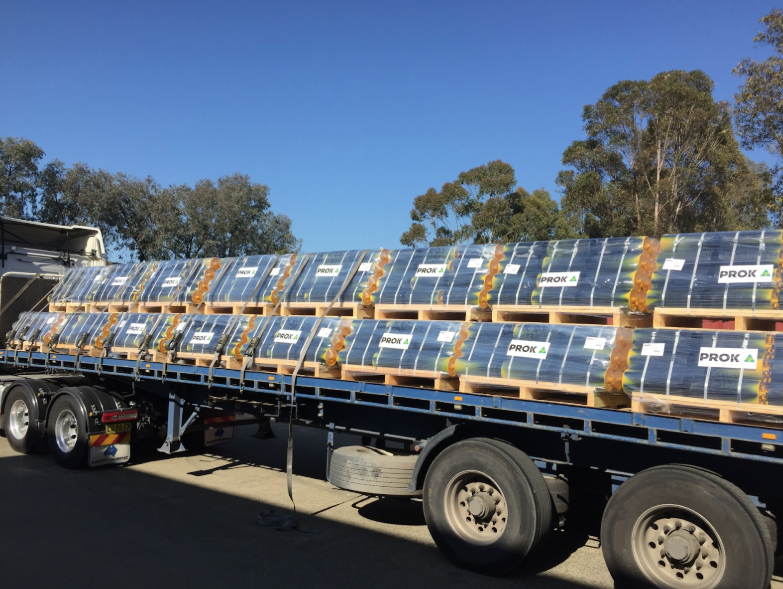
When planning a 2.5 kilometre (1.5 mile) conveyor for its north expansion, Peabody’s Centurion Mine faced a familiar challenge. Lightweight conveyor structures used elsewhere in the operation had shown signs of movement during use. For the new extension, the mine needed a design that was light enough for underground installation and cost control, yet strong and stable enough to support access walkways and last the life of the project.
Partnering with PROK through NEPEAN Conveyors on the $12 million development, the Peabody team sought assurance that the new lightweight structures would perform better than previous designs. “The client was concerned that a lighter structure might have the same movement problems they’d seen elsewhere,” says Tony Behan, PROK’s project manager. “They needed us to prove through engineering and testing that we could reduce weight while maintaining stability.” Detailed design engineering, testing, and prototyping helped validate the structure and avoid delays.
The challenge: less weight, same durability
Every component had to be transported underground through tight tunnels and assembled manually. Lighter materials reduced handling risks, simplified installation, and controlled costs. However, the conveyor included integrated maintenance walkways requested for worker access, adding complexity. The system now needed to support human loads and potential coal spillage while remaining light enough for overhead installation.
“Once you put people on something, you have to design for multiple workers being on there at one time,” Behan explains. With a 2.5 kilometre span, any design flaw would repeat across the system, making early validation essential. The operations team needed a lightweight structure suited to their conditions, not just one meeting a weight target.
PROK’s engineering and design approach
PROK’s engineers conducted finite element analysis (FEA) to assess stress points. The analysis identified the root cause of movement in existing conveyors — insufficient rigidity at stringer connections under load. The initial design had cross-bracing every tenth bay, but prototype testing confirmed this wouldn’t fully prevent twisting.
Working with Peabody’s technical team, PROK recommended improvements to enhance stability without adding weight:
- Additional connection holes in stringers to minimise torsional movement
- More frequent knee braces and cross-bracing
- Modified H-frame connections to better distribute loads
- Design allowances for coal spillage on walkways
“We ran a prototype of six-metre-long bays to test the modifications,” Behan says. “The video testing with the client showed how the added bracing eliminated movement issues while keeping the structure weight manageable.” Collaborative testing gave Peabody confidence to proceed to full production.
Staged production and delivery
Peabody built quality control into the project with 30% and 80% design review milestones, letting engineers check modifications before manufacturing began. Fabrication was split between overseas steel frames and over 8,000 rollers produced locally in Sydney. Each container was inspected before shipping to ensure components were ready for installation.
“The client needed everything faster than originally planned,” Behan notes. “We adapted our delivery schedule so they could stay on track.” Deliveries were staged every two weeks, with roughly 500 metres shipped each time, allowing installation to progress while manufacturing continued.
Installation teams also used PROK’s hydraulic installation jig to safely position roof-mounted components in confined underground spaces. When additional bracing was later needed for the drift section, PROK engineers supplied reinforcement components quickly.
Results: successful expansion with no movement issues
The Centurion expansion was completed smoothly, with the modified lightweight design showing no movement during operation. Components were delivered on schedule and within budget despite the compressed 2024 timeline.
“We kept them informed weekly throughout the project,” says Shaun Smith, NEPEAN Conveyors’ project manager. “The project ran to schedule, which is strong performance for this complexity level.”
Today, the 2.5 kilometre conveyor forms the backbone of the expansion. Maintenance teams safely access the system via the integrated walkways, and operations report no belt tracking or stability issues. Thorough validation before production allowed Peabody to avoid costly retrofitting or downtime.
“At the end of the day, the client’s concerns about lightweight structure were valid,” Behan reflects. “Good engineering and thorough testing found the solution, but it was their insistence on proving it first that made the difference.”

